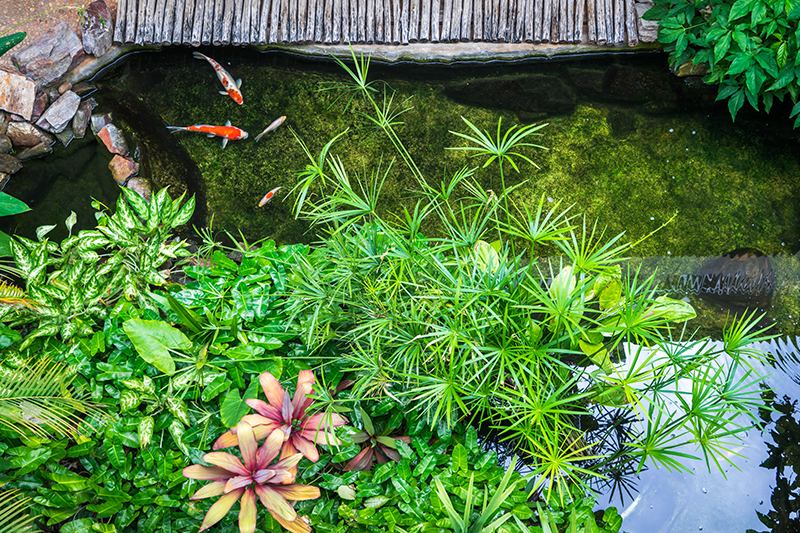Easy and effective tips for fish and pond care in the colder months.
Care for plants and you’ll care for your pond, too
Firstly, you should note that autumn is the right time of year to take a few precautionary measures against ice and frost on your pond. For example, cut back any reed beds or lily leaves. Any wetland area around the edge of your pond can also be thinned out. Also note that there are several plants, such as lotuses, which will not survive the harsh winter weather unscathed. Make sure that you remove such plants from the pond and place them in a water bucket over winter in a frost-free area with plenty of natural light.
A further aim of these precautionary measures is to prevent too many organic materials from getting into the water and being broken down by microorganisms. This is because such activity can produce fermentation gases, which vastly impair the water quality. The decomposition process uses up the oxygen that your fish depends on. It is therefore important to keep a careful eye on the autumnal leaves that fall into the water.
Get rid of leaves
A leaf net will save you work – winter (and autumn) proof your pond by installing a leaf net. With small ponds in particular, this is a great solution that eliminates the daily need to fish out the leaves. The net should ideally be pulled tautly across the pond, several centimetres above the water. With some models, the net is supported by wires or polystyrene blocks that float on the surface of the pond to prevent it from dangling into the water. Some manufacturers offer a tent-like design so that the leaves can slide off the net at the side of the pond. Depending on the amount of leaf fall, you should clean the net as required. Once the trees have dropped all of their leaves, you can carefully remove the net together with any leaves collected on it.
Remove sediment
Over time, a thick layer of sediment builds up in the deeper areas of a garden pond, gradually reducing the pond depth. However, the correct water depth is essential for the survival of your fish. If the pond is getting too shallow, it is advisable to occasionally remove the sediment – and autumn is the ideal time to do this. If your pond is only shallow, use your hand to scoop out the sediment into a bucket and leave it by the edge of the pond for a few days. This allows any living creatures contained in it to crawl back into the water.
Pond vacuums can also be used to remove sediment more quickly and easily – and are necessary devices for ponds that are too deep to be cleaned by hand. However, the mechanical method also has its disadvantages as it has a far greater impact on the pond’s ecosystem and removes a lot of microorganisms that are actually important. To minimise the damage caused, not all sediment should be removed, but only part of it.
Give your water pump a break
In winter, the warmest water layers (where your fish will remain) are located at the very bottom of the pond. If these are exchanged with water layers higher up, the creatures in your pond will get far too cold, causing them great stress. When using pump systems over winter, only ever install them in the shallow water area. If there’s any chance of your pond actually freezing, then the pump must be removed so it too doesn’t freeze.
Check out Petbarn’s pump range online or in store and, if you have any questions, don’t be afraid to ask your knowledgeable Petbarn staff member for information and advice.

